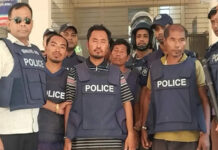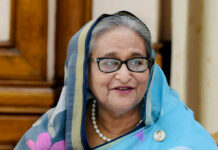The Dhaka Central Jail that inherits the rich history of ancient Dhaka and Bengal, is expected to be shifted to Keraniganj in the outskirts of the capital, leaving behind the Bangabandhu Memorial Museum and the National Four Leaders Memorial Museum inside.
After the shifting, the museums will be opened for people and the remaining area of the jail will be turned into a park, serving the need for open spaces in the stuffy older part of Dhaka.
Brig Gen Ashraful Islam Khan, inspector general of prisons, said: “The museums inside the Dhaka Central Jail will be opened for the mass people in the first week of December.”
“As part of the process for opening up the museums for people, the shifting of prisoners from the existing jail to the new facility in Keraniganj will start at the end of this month [November],” the IG-Prisons said.
“As it [shifting] would take quite a bit of time, the process will continue even after the opening up of the museums.”
Ashrafu also said the jail buildings in Keraniganj have the capacity to accommodate around 5,000 inmates. At present, the Dhaka Central Jail has around 3,000 prisoners.
Prime Minister Sheikh Hasina inaugurated the museums on May 8, 2010.
The Bangabandhu Memorial Museum was established encompassing the Dewani Cell where he was detained during the Pakistani regime.
The Four National Leaders Memorial Museum, built in the memory of Syed Nazrul Islam, Tajuddin Ahmed, M Mansur Ali and AHM Qamruzzaman, all slain on November 3, 1975 inside the jail was built in a separate structure named “Mrityunjoy.”
The assassins, believed to be the masterminds of the coup that led to the killing of Bangabandhu Sheikh Mujibur Rahman, gunned down the four leaders just three months after Bangabandhu and most of his family members were killed.
After the PM inaugurated the museums, separate sculptures of Bangabandhu and the four leaders had been installed in front of the respective museums.
Before British rule, there was a Mughal fort at the site of the current jail. During the first few years of the 19th century, the fort was renovated, and turned into a jail. Until 1836, when the facility was turned into the Dhaka Central Jail, the Kotowali police station was co-located there.
According to jail officials, objects used by history makers like Masterda Surya Sen and Bangabandhu Sheikh Mujibur Rahman would be on display at the museum.
Built on 36 acres of land, the central jail at Nazimuddin Road in downtown Dhaka also witnessed many historical episodes. The facility housed many political prisoners, especially during the Language Movement of 1952, the Six-Point Movement and the Liberation War of 1971.
The process of shifting the Dhaka Central Jail has been going on in phases since 2003. A portion of the jail was shifted to Gazipur after the establishment of four separate jails in Kashimpur.
The project for constructing jails in Keraniganj on 194 acres of land was approved in the 2005-06 fiscal. The construction work began in September 2007.
Zahir Uddin Babar, assistant inspector general of prisons, said one of the jails in Keraniganj would house convicts, another would house detainees and the remaining would be for women.
Source: Dhaka Tribune










